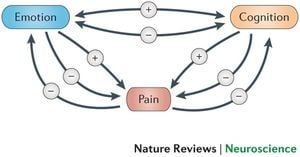The stock market experienced turbulence as geopolitical tensions and economic indicators weighed heavily on investor sentiment. The S&P 500 index encountered challenges, closing at 5,983.25 points, down by 29.88 points or 0.50%. The decline marked the index's drop below the 6,000 mark for the first time since early February, reflecting broader market concerns.
A key factor influencing market dynamics was the uncertainty surrounding the upcoming earnings report from chip giant Nvidia (NASDAQ:NVDA), which investors are nervously anticipating. Both the tech-heavy Nasdaq and the Russell 2000 have been struggling this year, as notable losses were recorded across these sectors. The Nasdaq Composite slid down to 19,286.93 points, falling by 237.08 points or 1.21% amid selling pressure concentrated on tech stocks, indicating trepidation within this segment.
This week, venture investor outlooks were dimmed not only by tech fears but also by disappointing retail sales reports and business surveys signaling possible contractions. University of Michigan's consumer sentiment index reported significant declines, with consumer confidence at its lowest level since February the previous year, as analysts now brace for potential slumps reflected by the upcoming Conference Board’s consumer confidence index, forecasted to drop to five-month lows.
Concerns about U.S. economic performance have risen, evidenced by the drop of the economic surprise index to its most negative position since September last year, driving cautious investor behavior. The Dallas Fed Manufacturing Index saw sharp declines, from 14.1 in January to -8.3, well below analyst expectations of 18, signaling struggles within the manufacturing sector and dampening market enthusiasm.
Shifts also spotlight international concerns: Trade tensions remain on the radar with President Trump adamantly stating tariffs on Canadian and Mexican imports are proceeding as planned, creating heightened uncertainty. Mixed reactions to this strategy surfaced as many traders worried about the backlash from these tariffs hampering growth on both sides of the border.
Despite these pressures, some sectors remain resilient. The Dow Jones managed to gain slight traction, reflecting strength among healthcare stocks, with Nike witnessing remarkable gains after being upgraded by Jefferies from 'Hold' to 'Buy'. Traders are now gauging whether the Dow can maintain support around 43,500–43,600, needing to break above 43,700 to reach the resistance levels at 44,000–44,100.
Market volatility also reignited interest around Treasury yields, dipping lower this week, with ten-year Treasury yields falling to their lowest for the year at 4.33%. The behaviour of yields, influenced by economic concerns, points to shifting investor attitudes needing reassurance about future economic frameworks.
Internationally, Europe's stock market demonstrated resilience, with the pan-European STOXX 600 index rising by 0.3%. Following election results there which potentially speak to fiscal easing, many investors shifted focus from U.S. markets to recoverings stocks with attractive valuations abroad. The German aerospace and defense index climbed 1.3% as increasing military budgets drew attention.
Analysts point to the growing fear when considering the potential fallout from stock market declines, particularly how it may impact consumer confidence. A significant drop could threaten the 'wealth effect,' especially among wealthier households who tend to be pivotal to retail spending.
The financial market’s fluctuations suggest underlying conflicts driven by both geopolitical issues and economic performance uncertainties, underscoring the complexity of the U.S. investment climate. With many indicators painting troubling pictures locally, global developments are now as impactful as domestic data leading traders to stay particularly vigilant.
Looking forward, the upcoming economic data releases are anticipated to provide clarity, including today’s releases which encompass consumer confidence and Richmond Fed surveys. Analysts will closely follow how these trends develop, as the interplay between technology stocks, economic performance, and trade policies shapes the market's near-term direction.



